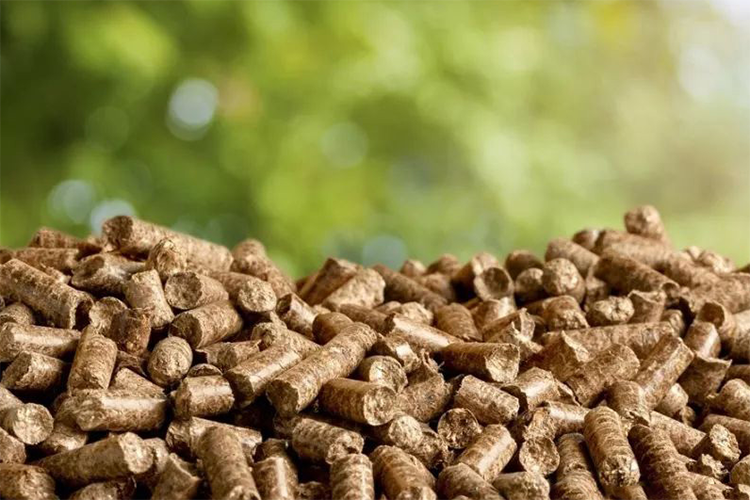With the continuous development of agriculture and forestry production, the issue of handling agricultural and forestry waste is becoming increasingly prominent. These wastes, such as straw, tree branches, bamboo, fallen leaves, etc., traditional disposal methods often lead to environmental pollution or resource waste. The development of modern technology has made the treatment of agricultural and forestry waste more efficient and environmentally friendly, especially the combination of incineration, pyrolysis, and fertilizer technology, which provides a new solution. This comprehensive processing equipment can not only efficiently reduce the volume of waste, but also convert it into valuable energy and fertilizer, greatly improving the utilization rate of resources.

The core components of agricultural and forestry waste treatment incineration pyrolysis equipment include feeding system, incinerator or pyrolysis furnace, flue gas treatment system, energy recovery system, ash treatment system, and automation control system. The feeding system is responsible for feeding agricultural and forestry waste into incinerators or pyrolysis furnaces to ensure the stable operation of the equipment. Incinerators or pyrolysis furnaces convert waste into thermal energy, charcoal residue, and harmful gases through high temperatures. Incinerators generate thermal energy through complete combustion, while pyrolysis furnaces decompose organic matter into biochar, bio oil, and combustible gases in anaerobic environments.
However, the exhaust gases generated during incineration and pyrolysis often contain various harmful substances, making flue gas treatment systems particularly important. The system effectively removes pollutants such as sulfur dioxide, nitrogen oxides, dioxins, etc. through a series of filtering and purification devices, ensuring that emissions meet environmental standards. At the same time, the energy recovery system recovers the heat generated during the incineration or pyrolysis process and converts it into steam, electricity, or heat, further improving the efficiency of energy utilization. Ash and charcoal residues are processed and may be converted into organic fertilizers or used for other agricultural purposes, reducing the environmental impact of waste.
On the basis of these basic devices, fertilizer making equipment has been added, making the functions of the entire system more diversified. The fertilizer production equipment mainly includes composting equipment, biochar equipment, and liquid fertilizer production equipment. Composting equipment promotes the maturation of waste and generates high-quality organic fertilizers by controlling conditions such as temperature, humidity, and oxygen. The biochar device converts organic waste into biochar through a pyrolysis process. This biochar can not only be used as fertilizer, but also for soil improvement, enhancing soil permeability, water retention, and nutrient storage capacity. The liquid fertilizer production equipment converts organic matter in waste into liquid fertilizer through chemical and biological technologies, which facilitates agricultural application and improves fertilizer utilization efficiency.
The advantages of this system are self-evident. Firstly, after incineration or pyrolysis, the volume of agricultural and forestry waste is greatly reduced. The incineration ash and pyrolysis charcoal residue can be further converted into organic fertilizers through fertilizer making equipment, achieving the resource utilization of waste. Secondly, the use of these organic fertilizers reduces reliance on chemical fertilizers and avoids the pollution of soil and water sources caused by excessive application of chemical fertilizers. Especially the use of biochar can not only improve soil structure, but also enhance crop disease resistance and growth rate, thereby enhancing the sustainability of agricultural production.

In addition, the energy generated during incineration and pyrolysis can also be effectively recovered and utilized to provide the required heat, steam, or electricity for the production process, reducing the energy consumption of equipment and improving the overall economic benefits of the system. Through this series of processing and recycling, the entire waste disposal system can not only reduce environmental pollution, but also effectively save energy and create economic value.
From an environmental perspective, this comprehensive treatment system greatly reduces the negative impact of agricultural and forestry waste on the environment. Traditional treatment methods, such as open burning, often release large amounts of harmful gases, polluting air quality. Modern incineration pyrolysis technology, through precise flue gas treatment systems, can effectively remove these harmful substances, reduce pollutant emissions, and comply with international and regional environmental standards. In addition, the process of waste disposal is closed and efficient, without generating secondary pollution, which is in line with the concept of green development.
In terms of economic benefits, this system not only reduces production costs by recycling energy, but also creates significant sources of income through the sales of biochar and liquid fertilizers. With the increasing demand for environmentally friendly fertilizers and energy products in the market, the market prospects for these by-products are very broad. Moreover, by improving soil quality and increasing crop yields, it will ultimately further promote the improvement of agricultural production efficiency.
In summary, the combination of agricultural and forestry waste treatment, incineration, pyrolysis, and fertilizer production technology is not only an effective way to treat agricultural and forestry waste, but also an important means to promote sustainable agricultural development. This technology realizes the resource utilization of waste, reduces the burden on the environment, and creates dual benefits of economy and environmental protection. With the further improvement of technology and the continuous growth of market demand, the promotion and application of this equipment worldwide will make important contributions to solving the problem of agricultural and forestry waste treatment, improving agricultural production efficiency, and promoting green development.
Yongle Environmental Protection is mainly engaged in the research and development, production and sales of complete sets of technical equipment for organic solid waste disposal and comprehensive utilization. Production and manufacturing, domestic waste treatment equipment, tire pyrolysis equipment, medical waste disposal equipment, hazardous waste disposal equipment, and achieve efficient and comprehensive utilization of resources through independently developed low-temperature anaerobic pyrolysis equipment technology solutions.
Tags:Composition and advantages of agricultural and forestry waste treatment equipment,forestry waste treatment equipment,YONGLE GROUP
 Latest news
Latest news



























